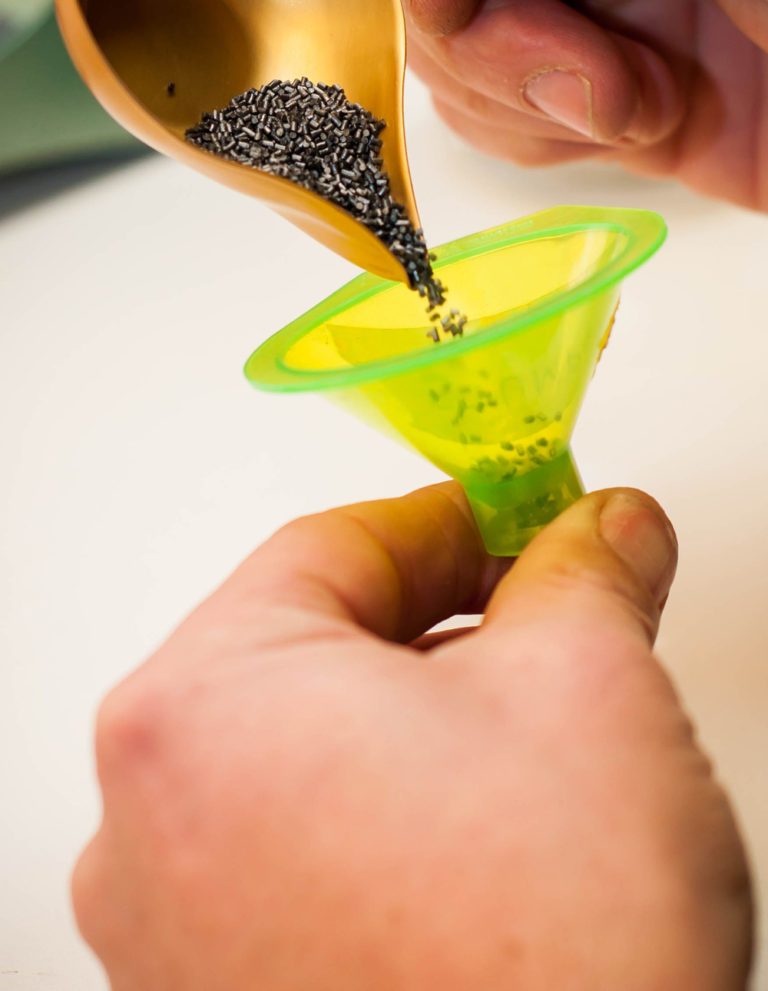

Stick, ball, flake — propellant comes in all shapes and sizes. Master ballistician Phil Massaro helps you figure out exactly which gunpowder structure best suits your next reloading project.
Gunpowder. We all use it, we all read about it, but it may warrant some discussion to better understand it. Especially when it comes to gunpowder structure.
Modern gunpowder has gone through some major revisions, with burn rates becoming slower and slower to feed the huge-cased magnums. In addition to this, gunpowder structure has been revised to operate better in powder dispensers and throwers that have become so common.
Short-Cut Gunpowders
The first one that pops into my mind is Hodgdon’s H4831SC, the SC standing for Short Cut.
For me, the original H4831 has been a rock to lean upon, achieving fantastic velocity and accuracy in cartridges from the .270 Winchester up to and including the behemoth .378 Weatherby. However, the long, extruded grain structure didn’t flow well through a powder measure, and was easily crushed when loads became compressed.
The new SC powder does flow better in the dispensers and meters, and I like the way it fills the voids in the case better. And that makes a huge difference that we’ll get to momentarily. First, lets take a look at all the different gunpowder structures.
Structure Of The Grain
Stick powders look like small strands of spaghetti, cut into specific lengths. The powder is extruded to a certain diameter, and then coated in a retardant that slows the burning to an exact rate. Ball powders are tiny flattened spheres (with the exception of a few, like H380) that compress very well, leaving very few voids in a case filled to its capacity. Flake powders are flat and circular and, being purposed for pistol cartridges and shot shells, are rarely compressed. In turn, their grain structure doesn’t usually pose a problem.
Shaping Up Loads
When the loads we’ve chosen for our rifle cartridges approach or exceed 100-percent case capacity the grain structure can be broken, giving slightly unpredictable results. This is an especially important consideration when we are loading for extreme accuracy.
With many rifle cases, I’ve achieved the best accuracy when a case is filled near to capacity. And with some of my own rifles I have compressed loads that work very well, especially with some of the longer-for-caliber monometal bullets or hollow-point boat tails with long ogives. Let’s look at some examples.
The .308 Winchester, a very efficient case, causes some problems when loaded with longer 180-grain bullets. Powders that work so well with shorter bullets — such as IMR4064 and Varget — are highly compressed when using bullets like the 180-grain Hornady GMX or Swift Scirocco II.

Instead of loading stick powders, I’ve used Hodgdon’s H380 with good effect. The spherical design of H380 stacks up easier than do even the short-cut stick powders, and upon compression it is more difficult to break the grain structure.
The same can be said for the .300 Winchester Magnum, whose overall length presents challenges. The cartridge — what I like to call the .300 Winifred, an homage to the Elephant Guard from Rudyard Kipling's The Jungle Book — requires longer bullets be seated deep into the case to function properly in the magazine of most rifles. This means losing case capacity when firing the long, lean bullets that produce such wonderful accuracy.
Most of my loads for the Winifred are centered around stick powders such as IMR4350, Reloder-19 and Reloder-22. In the event that I want to use a 180-grain Berger VLD I often look to powders like H414, a ball powder that has a grain structure similar to H380, but with a much slower burn rate that is better suited to the magnum case.
When your loads are approaching maximum, take another look at the reloading manual for the bullet you’ve chosen, and try to pick a powder that will best suit your needs without breaking the grain structure. I bet you’ll see an improvement in performance.

Next Step: Get your FREE Printable Target Pack
Enhance your shooting precision with our 62 MOA Targets, perfect for rifles and handguns. Crafted in collaboration with Storm Tactical for accuracy and versatility.
Subscribe to the Gun Digest email newsletter and get your downloadable target pack sent straight to your inbox. Stay updated with the latest firearms info in the industry.

![Best Concealed Carry Guns In 2025 [Field Tested] Wilson Combat EDC X9S 1](https://gundigest.com/wp-content/uploads/Wilson-Combat-EDC-X9S-1-324x160.jpg)


![Best 9mm Carbine: Affordable PCCs [Tested] Ruger Carbine Shooting](https://gundigest.com/wp-content/uploads/Ruger-Carbine-Shooting-100x70.jpg)
![Best AR-15: Top Options Available Today [Field Tested] Harrington and Richardson PSA XM177E2 feature](https://gundigest.com/wp-content/uploads/Harrington-and-Richardson-PSA-XM177E2-feature-100x70.jpg)
